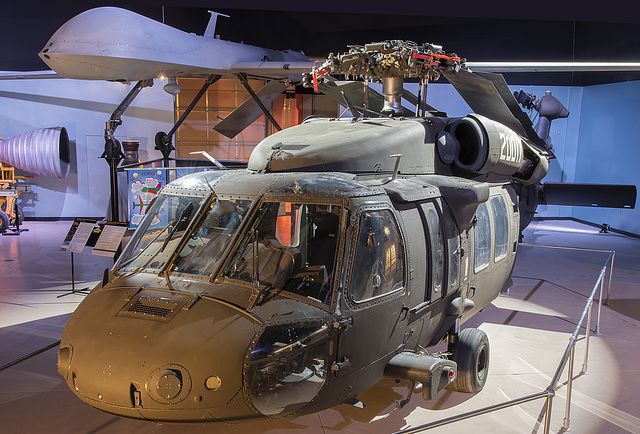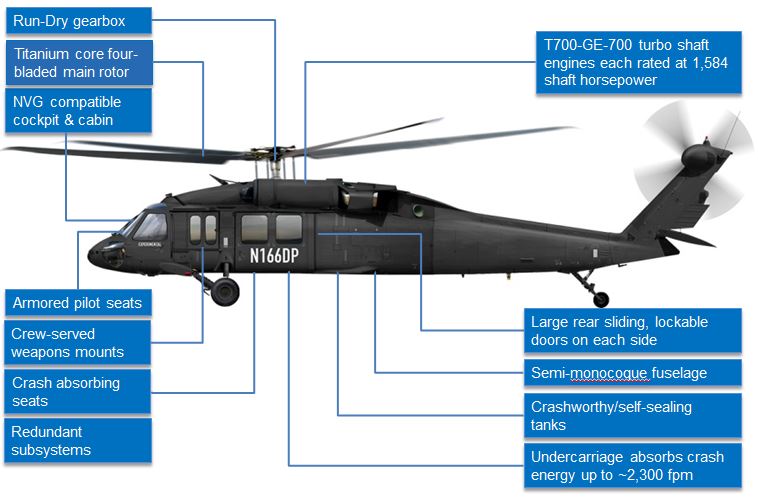UH 60 Helicopter Overview: Key Features and Capabilities for Military Missions
UH 60 Helicopter Overview: Key Features and Capabilities for Military Missions
Blog Article
Exploring the Background and Advancement of the UH 60 Helicopter

Beginnings of the UH-60
The beginnings of the UH-60 helicopter can be traced back to the late 1960s, a period noted by the requirement for a versatile energy aircraft that can adapt to the progressing demands of modern-day war. The united state Military identified the requirement for a replacement for the older UH-1 Iroquois, which was ending up being significantly poor for the complexities of modern fight circumstances. In 1967, the Military started the Energy Tactical Transportation Airplane System (UTTAS) program, which looked for to establish a multi-role helicopter qualified of numerous objectives, consisting of troop transportation, medical evacuation, and logistical support.
The UH-60 Black Hawk was presented, showcasing innovative layout aspects and progressed modern technology that established it apart from its predecessors. The UH-60 promptly got recognition for its robust performance, integrity, and versatility, leading the method for its considerable usage in military operations and strengthening its standing as a foundation of United state Army aviation.
Secret Design Features
Cutting-edge design attributes of the UH-60 Black Hawk substantially add to its functional efficiency. Among the most noteworthy aspects is its twin-engine arrangement, which enhances dependability and provides a higher power-to-weight proportion, allowing the helicopter to perform under different problems. The aircraft's four-blade primary blades system supplies enhanced lift and ability to move, vital for tactical goals.

In addition, the cabin is designed for ideal visibility and comfort designs, featuring innovative avionics that enhance pilot procedures. The modular style of the UH-60 allows for simple upkeep and versatility, making it appropriate for different mission accounts, from army transport to medevac operations. These vital design attributes make certain that the UH-60 Black Hawk remains a functional and trustworthy asset in armed forces aeronautics, efficient in fulfilling the needs of modern-day warfare.
Technical Innovations
Current technical advancements in the UH-60 Black Hawk have substantially boosted its functional capabilities and convenience. The integration of advanced avionics, such as electronic trip control systems and boosted situational awareness screens, allows pilots to operate with boosted accuracy and performance. These systems assist in improved navigation, communication, and data sharing, making it possible for the helicopter to function successfully in varied settings.
In addition, the intro of composite materials has actually decreased the general weight of the airplane while keeping architectural stability. This decrease improves fuel efficiency and expands functional variety. The consolidation of advanced blades innovation, consisting of making use of four-blade, totally articulated blades systems, has enhanced lift performance and maneuverability, permitting better handling in numerous trip problems.

In addition, advancements in propulsion systems, such as the T700-GE-701D engines, have actually increased power output and reliability - uh 60. These engines contribute to superior performance in hot-weather and high-altitude problems
Finally, the integration of self-defense systems and improved sensor bundles enhances the Black Hawk's survivability and goal performance. Collectively, these technical improvements make certain that the UH-60 Black Hawk continues to be a crucial asset in contemporary air travel, capable of adjusting to the progressing demands of humanitarian and military objectives.
Function in Military Procedures
As the foundation of U.S. Military aeronautics, the UH-60 helicopter plays a crucial duty in different military procedures, working as a flexible system for battle assistance, transport, and medevac objectives - uh 60. Its layout integrates the capacity to operate in diverse environments, making it essential for troop movement and logistical support in both unusual and standard war

In clinical emptying scenarios, the UH-60 has actually confirmed important, substantially minimizing the time to transport damaged soldiers from the battlefield to medical centers. Its sophisticated avionics and night vision capacities additionally make certain objective success under challenging problems. In general, the UH-60 helicopter remains an important property, continually adapting to fulfill the advancing needs of armed forces procedures and improving the effectiveness of united state pressures worldwide.
Future of the UH-60
Looking ahead, the future of the UH-60 helicopter includes significant improvements in modern technology and capacities developed to boost its operational performance. As armed forces operations progress, the UH-60 is anticipated to integrate cutting-edge modern technologies, consisting of boosted avionics, improved tools systems, and advanced interaction tools. These improvements will certainly enable for higher situational understanding and mission flexibility, ensuring that the UH-60 continues to be a crucial property on the battleground.
One remarkable advancement is the integration of fly-by-wire systems, which will enhance trip control precision and minimize pilot workload. Initiatives to update the airframe and engines intend to boost payload, array, and speed capacity, thus broadening the helicopter's operational range.
The future additionally holds assurance for find out this here raised interoperability with unmanned airborne systems (UAS), enabling coordinated objectives that leverage both manned and unmanned capabilities. Additionally, the incorporation of synthetic knowledge and artificial intelligence might enhance flight dynamics and upkeep processes, leading to lowered operational costs.
Conclusion
The UH-60 Black Hawk helicopter stands for a significant achievement in army aviation, advancing from the united state Military's first demands for a flexible energy airplane. Its ingenious style features and continual technical advancements have actually guaranteed its relevance in various army operations over the decades. As the needs of modern-day warfare change, the future of the UH-60 will likely include more enhancements and adaptations, enhancing its standing as an important property for armed forces worldwide.
The UH-60 Black Hawk helicopter represents a substantial landmark in military aeronautics, emerging from the United state Army's mission for an extra trusted and flexible energy aircraft in the late 20th century.The origins of the UH-60 helicopter can be mapped back to the late 1960s, a period noted by the need for a versatile energy aircraft that might adapt to the developing demands of modern war. Generally, the UH-60 helicopter stays an important possession, continuously adapting to meet the evolving demands of army operations and improving the efficiency of U.S. forces worldwide.
Looking ahead, the future of the UH-60 helicopter entails significant improvements in innovation and capacities designed to enhance its functional effectiveness.The UH-60 Black Hawk helicopter stands for a substantial achievement in armed forces aeronautics, evolving from the U.S. Military's important source first needs for a versatile utility airplane.
Report this page